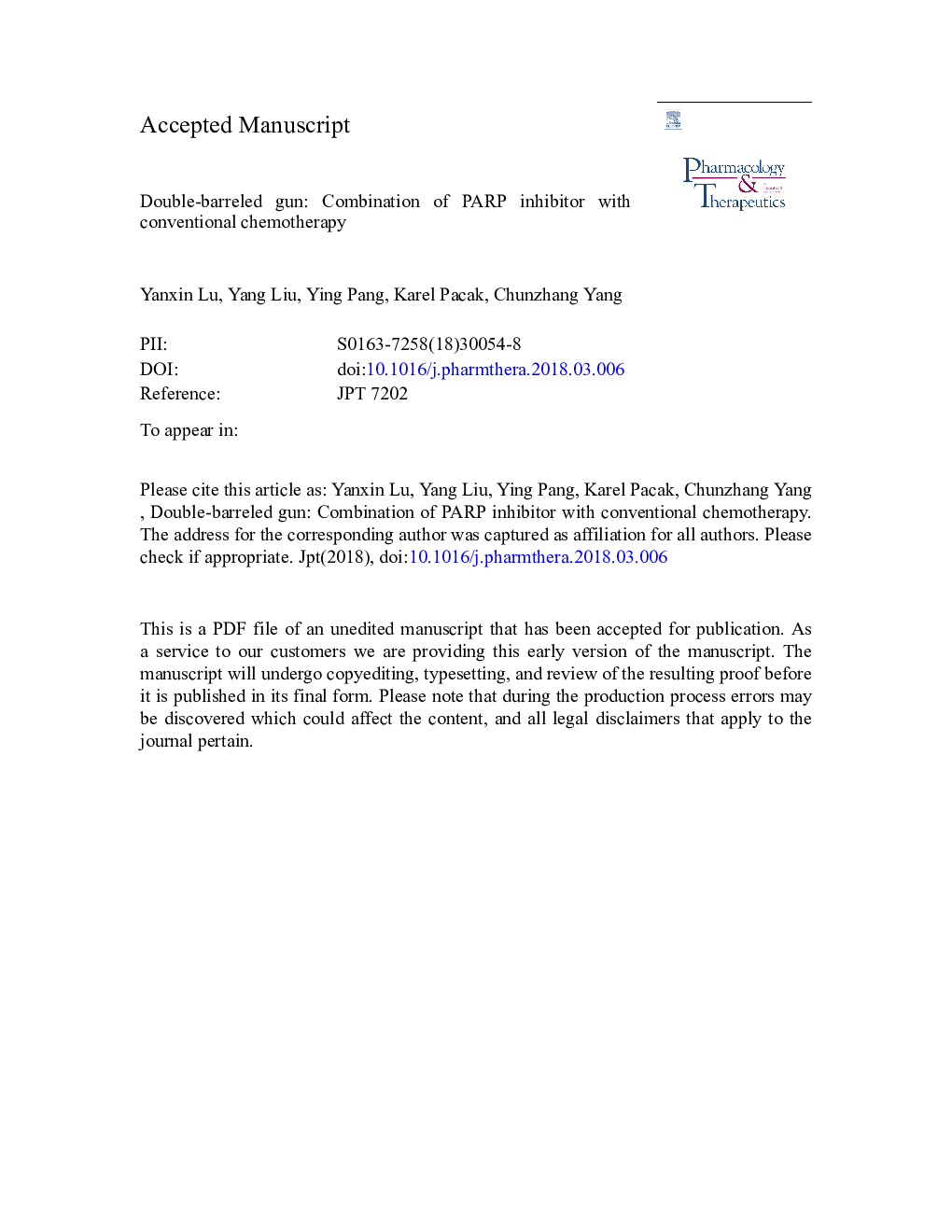| Article ID | Journal | Published Year | Pages | File Type |
|---|---|---|---|---|
| 8536793 | Pharmacology & Therapeutics | 2018 | 38 Pages |
Abstract
DNA repair pathways are evolutionarily conserved molecular mechanisms that maintain the integrity of genomic DNA. In cancer therapies, the integrity and activity of DNA repair pathways predict therapy resistance and disease outcome. Members of the poly (ADP-ribose) polymerase (PARP) family initiate and organize the biologic process of DNA repair, which counteracts many types of chemotherapies. Since the first development in approximately 3 decades ago, PARP inhibitors have greatly changed the concept of cancer therapy, leading to encouraging improvements in tumor suppression and disease outcomes. Here we summaries both pre-clinical and clinical findings of PARP inhibitors applications, particularly for combination therapies.
Keywords
MTICN3-MeAN3-methyladenineNHEJMGMTBERPARPN7-MeG3-ABTMZ3-AminobenzamideN7-methylguanineO-6-Methylguanine-DNA MethyltransferaseO6-methylguanineO6-MeGDNA repairBase-excision repairTemozolomideCombination therapyCancerChemotherapynon-homologous end joiningPARP inhibitorHomologous recombinationpoly (ADP-ribose) polymeraseChemoresistance
Related Topics
Health Sciences
Pharmacology, Toxicology and Pharmaceutical Science
Pharmacology
Authors
Yanxin Lu, Yang Liu, Ying Pang, Karel Pacak, Chunzhang Yang,
